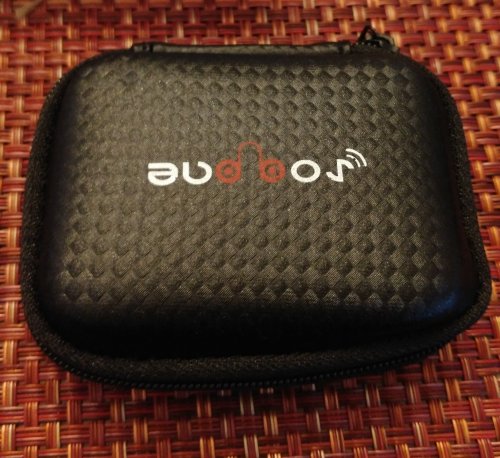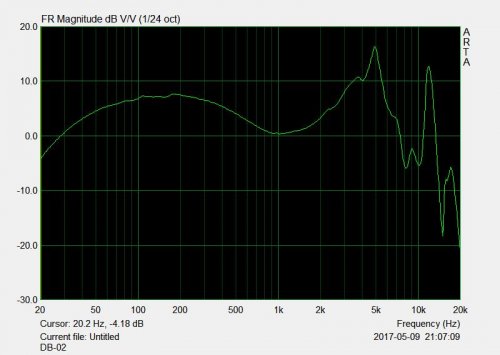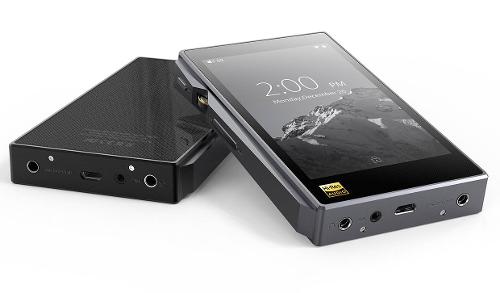Introduction
Audbos approached me to review one of their sets, the DB-02. Available through Amazon, this hybrid set seemed to be a good value, but it also seemed very familiar.
As an enthusiast of Asian brands, I came to realize the DB-02 is a rebadged Magaosi BK50 which had very good reviews. Through further digging, I found that Magaosi and Audbos were owned by the same company, making Audbos the brand name geared toward the western market.
With Magaosi being a very good brand I was familiar with, I eagerly started burning in the DB-02.
REVIEW

Specifications
Brand: AUDBOS
Sensitivity: 101dB/mW
Impedance: 16Ω
Frequency response: 20~20000Hz
Distortion: ≤1%
Rated power: 3 mw
Max power: 10 mw
Jack: 3.5MM gold-plated straight insert
Wire length: 1.2M / 3.9 foot
Included Accessories
· 3 pairs of Silicone tips
· Zippered carrying case

Housing/Fit/Isolation
There are two things that stand out with the DB-02 design, the wood and the comfort. The housing is nice and light in ear and never feels intrusive. With KZ Starlined eartips, I’m able to achieve a deep seal that doesn’t need adjusting while walking, making this an ideal pair for someone active. The wood veneer above the aluminum alloy adds a touch of class and refinement. The vented back helps provide a nice soundstage with slight sound leakage. Isolation is ok, and the leakage is minimal compared to something like the Fiio EX1.


Cable


Let’s start with the bad. The cable is noisy. The cable noise is easily noticeable at lower volumes and can be distracting. With replaceable cables being found on many earphones at all price ranges, I feel a replaceable cable would have been a better choice.
The good is that the mic and in-line controls work without issue via my Axon 7. It supposedly works without issue on iPhones as well which is a nice plus.
Sound Review
Testing Gear (in order of quality)
LH Labs Pulse X Infinity 2.0
LH Labs Geek Out V2+ Infinity (Balanced)
Axon 7
Asrock Fatality amped onboard DAC/amp
Music used for testing
Lots of Rock, Metal, EDM, Pop, Acoustic, anything that shuffles up.
Amplifier Needed?
No amp needed
Sound Signature

Geared toward Pop, R&B, EDM, vocals. A bit less clear for rock and instrument filled music. W-shaped, sharp treble peaks.
Bass
The ability to achieve strong bass levels is a requirement in my collection and the DB-02 delivers… to a point. My measurements may be off, but there seems to be a dip in subbass levels lower than 50hz. It doesn’t sound this way at first, so I may need to retest at some point. The strong midbass is more noticeable and fills out most music nicely with little to no bleed. If you love a good, clean, heavy bass line, you’ll enjoy the DB-02.
Midrange
Mids on the DB-02 are a bit off. The sloping frequency response is apparent in the lack of clarity and recession in the mids. Complex Rock passages in most genres sound a bit muffled and distant, where Rap and EDM come through much better. Vocals suffer the same, falling back into the mix when they should be more upfront. The tuning is geared towards most Pop music, which is fine for most people, but it comes at a cost to those who want to listen to anything else.
There is also a big spike in the upper mids/lower treble which can make the DB-02 sound bright and harsh at times. Different eartips can help tame this, such as foam tips.
Treble
The several dips and spikes in the frequency response also affect the treble. Much like with the mids, some tracks can sound harsh and sibilant. Foam tips can help tame this too, but foam tips often remove too much, making the already laid back vocals less audible.
There is a bit more clarity in the treble than the mids (which may be due to the balanced armature driver). At $59.99, clarity and performance are right around expectations for the price range. $49.99 would be a bit more of a value to me.
Soundstage, Imaging, Resolution
The DB-02’s strengths lie in its imaging, separation, and soundstage. Instrument locations can be pinpointed in the mix much like with a bit higher priced IEMs. Nothing sounds blended together, which gives the effect of a wide soundstage.
Conclusion
The DB-02 offers what I would expect from a $59.99 hybrid earphone. Its performance is priced right, and it is a good choice for those who love good bass and emphasized treble.
There is some serious competition in hybrids now however, and competitors like the KZ ZST have a very similar setup for less than $15. It becomes hard to justify the DB-02 over something that has a detachable cable and performance that isn’t too far off for 1/4th the price.
I do love that Audbos is bringing Magaosi equipment rebranded into the US via Amazon though. This is huge, as Magaosi makes some great gear and it is much easier to purchase via Amazon than through overseas sellers.
Having listened to their K3 model, I would recommend it over the DB-02 if you want higher quality sound. It is double the price of the DB-02 though, so if you aren’t willing to spend $100+ on a pair of earphones, the DB-02 does offer a lot otherwise.
You can buy a pair of the Audbos DB-02 here:
https://www.amazon.com/AUDBOS-Isolating-Earphones-Headphones-Earbuds/dp/B01NACLDSE
Audbos approached me to review one of their sets, the DB-02. Available through Amazon, this hybrid set seemed to be a good value, but it also seemed very familiar.
As an enthusiast of Asian brands, I came to realize the DB-02 is a rebadged Magaosi BK50 which had very good reviews. Through further digging, I found that Magaosi and Audbos were owned by the same company, making Audbos the brand name geared toward the western market.
With Magaosi being a very good brand I was familiar with, I eagerly started burning in the DB-02.
REVIEW

Specifications
Brand: AUDBOS
Sensitivity: 101dB/mW
Impedance: 16Ω
Frequency response: 20~20000Hz
Distortion: ≤1%
Rated power: 3 mw
Max power: 10 mw
Jack: 3.5MM gold-plated straight insert
Wire length: 1.2M / 3.9 foot
Included Accessories
· 3 pairs of Silicone tips
· Zippered carrying case

Housing/Fit/Isolation
There are two things that stand out with the DB-02 design, the wood and the comfort. The housing is nice and light in ear and never feels intrusive. With KZ Starlined eartips, I’m able to achieve a deep seal that doesn’t need adjusting while walking, making this an ideal pair for someone active. The wood veneer above the aluminum alloy adds a touch of class and refinement. The vented back helps provide a nice soundstage with slight sound leakage. Isolation is ok, and the leakage is minimal compared to something like the Fiio EX1.


Cable


Let’s start with the bad. The cable is noisy. The cable noise is easily noticeable at lower volumes and can be distracting. With replaceable cables being found on many earphones at all price ranges, I feel a replaceable cable would have been a better choice.
The good is that the mic and in-line controls work without issue via my Axon 7. It supposedly works without issue on iPhones as well which is a nice plus.
Sound Review
Testing Gear (in order of quality)
LH Labs Pulse X Infinity 2.0
LH Labs Geek Out V2+ Infinity (Balanced)
Axon 7
Asrock Fatality amped onboard DAC/amp
Music used for testing
Lots of Rock, Metal, EDM, Pop, Acoustic, anything that shuffles up.
Amplifier Needed?
No amp needed
Sound Signature

Geared toward Pop, R&B, EDM, vocals. A bit less clear for rock and instrument filled music. W-shaped, sharp treble peaks.
Bass
The ability to achieve strong bass levels is a requirement in my collection and the DB-02 delivers… to a point. My measurements may be off, but there seems to be a dip in subbass levels lower than 50hz. It doesn’t sound this way at first, so I may need to retest at some point. The strong midbass is more noticeable and fills out most music nicely with little to no bleed. If you love a good, clean, heavy bass line, you’ll enjoy the DB-02.
Midrange
Mids on the DB-02 are a bit off. The sloping frequency response is apparent in the lack of clarity and recession in the mids. Complex Rock passages in most genres sound a bit muffled and distant, where Rap and EDM come through much better. Vocals suffer the same, falling back into the mix when they should be more upfront. The tuning is geared towards most Pop music, which is fine for most people, but it comes at a cost to those who want to listen to anything else.
There is also a big spike in the upper mids/lower treble which can make the DB-02 sound bright and harsh at times. Different eartips can help tame this, such as foam tips.
Treble
The several dips and spikes in the frequency response also affect the treble. Much like with the mids, some tracks can sound harsh and sibilant. Foam tips can help tame this too, but foam tips often remove too much, making the already laid back vocals less audible.
There is a bit more clarity in the treble than the mids (which may be due to the balanced armature driver). At $59.99, clarity and performance are right around expectations for the price range. $49.99 would be a bit more of a value to me.
Soundstage, Imaging, Resolution
The DB-02’s strengths lie in its imaging, separation, and soundstage. Instrument locations can be pinpointed in the mix much like with a bit higher priced IEMs. Nothing sounds blended together, which gives the effect of a wide soundstage.
Conclusion
The DB-02 offers what I would expect from a $59.99 hybrid earphone. Its performance is priced right, and it is a good choice for those who love good bass and emphasized treble.
There is some serious competition in hybrids now however, and competitors like the KZ ZST have a very similar setup for less than $15. It becomes hard to justify the DB-02 over something that has a detachable cable and performance that isn’t too far off for 1/4th the price.
I do love that Audbos is bringing Magaosi equipment rebranded into the US via Amazon though. This is huge, as Magaosi makes some great gear and it is much easier to purchase via Amazon than through overseas sellers.
Having listened to their K3 model, I would recommend it over the DB-02 if you want higher quality sound. It is double the price of the DB-02 though, so if you aren’t willing to spend $100+ on a pair of earphones, the DB-02 does offer a lot otherwise.
You can buy a pair of the Audbos DB-02 here:
https://www.amazon.com/AUDBOS-Isolating-Earphones-Headphones-Earbuds/dp/B01NACLDSE






















































































































